August 3, 2013
WELCOME TO CHAPTER 17 – THE LAST CHAPTER OF THE NUTRITION SECTION OF BEYOND TRAINING: MASTERING ENDURANCE, HEALTH & LIFE, IN WHICH YOU'RE GOING TO GET The 21 Best Kitchen Tools, Grocery Shopping Guides, Cookbooks, Websites and Local Resources To Fuel Your Active Lifestyle.
And that's me, swinging my kettlebell in our little family kitchen.
While a kettlebell is not one of my go-to resources for preparing and eating real, healthy food to support an active lifestyle, there are many other crucial kitchen items we use here at the Greenfield household that you'll discover in this chapter.
Also, at the end of this chapter, I'll tell you about the toxin-reducing, clean-living material we'll be getting into in the next “Lifestyle” section of this book.
But before that, let's quickly review what you've learned so far in this nutrition section:
-Chapter 12: What A Half-Naked Ironman Kickboxing Superhero Can Teach You About How Many Calories, Carbs, Proteins And Fats You Should Be Eating
-Chapter 13: How Much Carbohydrate, Protein and Fat You Need To Stay Lean, Stay Sexy and Perform Like A Beast.
-Chapter 14: The Zen Of Customizing Your Diet To Your Unique Body And Goals
-Chapter 16: The Real Truth About What To Eat Before, During And After Your Workouts & Races.
If you haven't yet read any of those previous chapters, I highly encourage you do it. Your knowledge of nutrition will grow by leaps and bounds and as a result, your gut, performance, health and life will change drastically.
——————————————–
The 21 Best Kitchen Tools, Grocery Shopping Guides, Cookbooks, Websites and Local Resources To Fuel Your Active Lifestyle
The following are items that you'll instantly find when you step into my kitchen, or resources you'll find me tapping into on a daily basis. These are the crucial tools that my wife Jessa and I use to feed our boys and fuel our minds, while keeping our kitchen as holistic and full of real food as possible.
Don't feel the urge to rush out and buy everything at once. But do print this list, jot down a few notes as you read, or bookmark this page to return to later – and over the next year, make it your goal to gradually grow your arsenal of healthy nutrition options that will allow you to fuel your body with the thousands of calories necessary to maintain your performance goals – without killing your insides in the process.
Ready? Let's jump in…
——————————————–
Kitchen Tools
1. OmniBlender or Vitamix.
 A good blender has a big engine and sharp blades. A good blender is a blender you can put several handfuls of kale and almonds, coconut milk, coconut oil, an avocado, protein powder, cinnamon, sea salt, spirulina, Brazil nuts and any other random item you want to put into a kitchen-sink breakfast, press blend, and do morning after morning without blowing up the engine or destroying the blades. A good blender also works for whipping up quick soups, stews, puddings, sauces and dressings. The OmniBlender or the Vitamix are the only two brands I've found so far that can do this stuff without blowing up. The only drawback is that both brands are bulky, so I travel with a Magic Bullet blender (pictured left).
A good blender has a big engine and sharp blades. A good blender is a blender you can put several handfuls of kale and almonds, coconut milk, coconut oil, an avocado, protein powder, cinnamon, sea salt, spirulina, Brazil nuts and any other random item you want to put into a kitchen-sink breakfast, press blend, and do morning after morning without blowing up the engine or destroying the blades. A good blender also works for whipping up quick soups, stews, puddings, sauces and dressings. The OmniBlender or the Vitamix are the only two brands I've found so far that can do this stuff without blowing up. The only drawback is that both brands are bulky, so I travel with a Magic Bullet blender (pictured left).
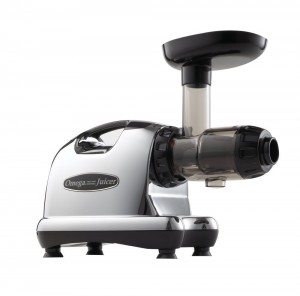
2. Omega masticating juicer
A “masticating” juicer takes pieces of fruits and vegetables pushed into the top of the juicer tube, and crushes and squeezes them with an auger. The juice drains out of the underside of the tube, while the pulp is squeezed out at the end of the tube. Because of the slower crushing and squeezing action, masticating juicers can process leafy greens like kale or smaller greens like wheatgrass, and the juice they produce lasts much longer than juice made in a centrifugal juicer (which should be consumed right away as it starts losing nutrients nearly immediately). Masticating juicers are pricier than centrifugal models, but worth it.
Conveniently for athletes, you can actually boost your iron intake from eating food cooked in cast iron cookware. But the benefits of using cast iron don't stop there. Replacing your non-stick or aluminum cookware with cast iron allows you to avoid the toxic fumes that accompany most other cookware. Besides the stove, you can use a cast iron skillet in the oven, at any temperature, and food cooks beautifully. Surprisingly, a preheated cast iron skillet rivals the qualities of non-stick cookware, as long as it is properly seasoned and cared for, and it's sturdy, wears well, and is easy to clean up too. They last forever, so you can give them to your grandkids and also find them used at at second-hand store (we bought all our cast-iron cookware from our local Goodwill).
Food drying is a way to preserve fruit, vegetables, and animal proteins after harvest, that has been practiced since ancient times, and a food dehydrator is simply a device that removes moisture from food to aid in natural preservation. A food dehydrator uses a combination of heat source and air flow to reduce the water content of foods. Removing moisture from food not only keeps bacteria from growing and spoiling food, but also dramatically reduces the weight of the food, making food dehydrators fantastic for creating portable, on-the-go items. We use a Excalibur dehydrator to make beef jerky, flax seed crackers, dried fruit roll-ups, pancake mix from leftover carrot pulp from the juicer and much more.
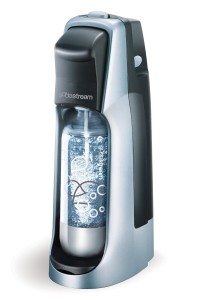
5. SodaStream
Carbonated water is fantastic for staving off appetite cravings or drinking something slightly more interesting than plain water. A SodaStream is simply a countertop machine that injects carbon dioxide into regular water, allowing you to have natural sparkling water at about half the price of the cans and bottles you get at the grocery store. Prior to meals, I'll often mix juice of half a lemon (a fantastic digestie aid) into a large glass of sparkling water – and it can also help you burp up any gas or bloating prior to heading out for a workout.
6. Good Kitchen Knife or Knifeset
When you're cooking with real, fresh food, your prep will go much faster if you actually have a dependable blade, and thanks to initially discovering the recommendation in Tim Ferriss's 4 Hour Chef book, the Wusthof Classic 8 Inch Cook's Knife is my go-to blade for kitchen prep. Dull knives take much of the joy out of cooking and meal prep, so treat yourself to a decent knife and you won't be sorry (and remember – a great knife is great, but you need to keep it sharp and there are also some great knife sharpeners out there – I prefer a whetstone).
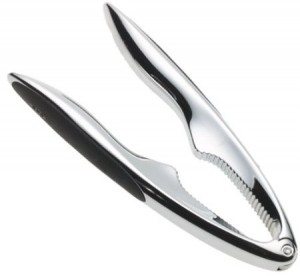
7. Nut Cracker
For thyroid and testosterone support, I eat 3-5 raw, in-the-shell Brazil nuts every day. Usually, they just get thrown into my morning smoothie. I dare you to implement this practice into your daily routine without a handy nut cracker.
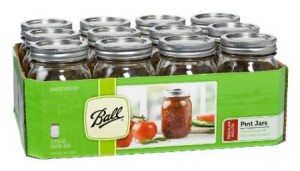
8. Canning Jars
In the cookbooks and meal preparation resources you'll discover later in this chapter, there are a variety of tips for fermentation, lactofermentation, pickling, canning, and adopting many of the other natural food preservation techniques our ancestors relied upon. We not only use canning jars for these techniques, but also as containers for raw milk, water, soaked or sprouted seeds and nuts, dried beans and just about anything else we don't want to be stored in nasty plastic containers (for reasons shared below).
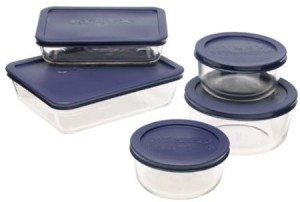
9. Pyrex BPA-Free Glass Containers
Bisphenol A (BPA) is a hazardous chemical compound found in plastic products, including hard plastic baby bottles, water bottles, hard plastic microwavable cookware, some plastic storage bags and containers and in the linings of aluminum cans. If you want to avoid BPA, you can use Pyrex brand cooking dishes, which are more like glass, do not contain BPA, and have special flexible lids that are also BPA-free. You can use Pyrex cookware for food storage – and even though we don't use a microwave, it is safer to use in Pyrex in a microwave in place of other hard plastic microwavable cookware that contains BPA.
10. Cheese Cloth
Cheesecloth is a loosely woven cotton cloth that closely resembles gauze in look and consistency. From draining blended almonds to make almond milk to draining yogurt to make whey, cheese cloths come in quite handy for anything that involves draining solids (or straining liquids). You can reuse it many times – just make sure you wash it before each use, then hang to air dry.
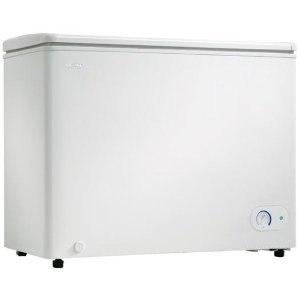
11. Chest Freezer
Every few months, we order bulk meats from USWellnessMeats. Each year, we also purchase half a grass-fed cow from our local farmer and I personally hunt and shoot wild game. When you're getting your food in bulk like this, you certainly save money and get good, fresh meat – but you need a place to store it, so a chest freezer comes in very handy, and we actually have two – both purchased from Craigslist.
——————————————–
Books
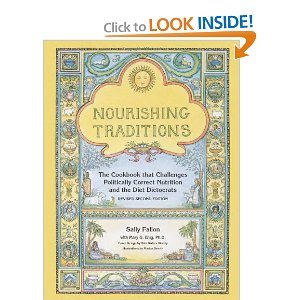
12. Nourishing Traditions cookbook.
In this book, you'll learn how to soak, sprout, ferment and do everything you need to do to make just about every food on the face of the planet healthy for the human body. Aptly titled “The Cookbook that Challenges Politically Correct Nutrition and the Diet Dictocrats”, this cookbook not only teaches you how to prepare real, healthy traditional foods but also includes a complete education on important topics such as the health benefits of traditional fats and oils (including butter and coconut oil); risks of vegetarianism; problems with modern soy foods; health benefits of sauces and gravies; proper preparation of whole grain products; pros and cons of milk consumption; easy-to-prepare enzyme enriched condiments and beverages; and healthy diets for babies and children.

13. Rich Food, Poor Food grocery shopping guide.
In this podcast interview with authors Mira and Jayson Calton, I call Rich Food, Poor Food “The One New Book That Every Healthy Grocery Shopper Should Have In Their Cart.” This indispensable grocery store guide takes you aisle by aisle, from the produce section to the pasta aisle, visiting every department in between, teaching you how to identify potentially problematic ingredients including hormones, pesticides and GMOs, as well as sharing tips on how to lock in a food's nutritional value during preservation and preparation. I recommend it to all my clients as the best “modern” grocery shopping guide you can get.
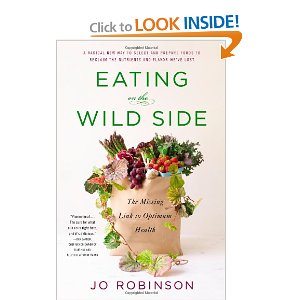
This is a brand new vegetable and fruit guide that teaches you how to choose present-day fruits and vegetables at the grocery store or farmer's market that come closest to the original nutritional content of those plant's wild ancestors. But it also shows you how to us simple, scientifically proven methods of storage and preparation that will preserve and enhance the health benefits of plants, including things like:
-Squeezing fresh garlic in a garlic press and then setting it aside for ten minutes before cooking it to increase it's natural immune defense properties…
-Baking potatoes, refrigerating them overnight, and then reheating them before serving to lower their glycemic index and keep them from spiking your blood sugar.
-Shredding lettuce the day before you eat it to double its antioxidant activity…
-Storing watermelon on the kitchen counter for up to a week and to allow it to develop more lycopene…
-Eating broccoli on the day you buy it to preserve its natural sugars and cancer-fighting compounds…
Although I have yet to get author Jo Robinson on the podcast, this book is a nutritional goldmine that I highly recommend.
——————————————–
Websites

15. LocalHarvest.org
When it comes to supporting your local economy and getting your food as fresh as possible, the best organic food is what's grown closest to you. You can use the Local Harvest website to find farmers' markets, family farms, and other sources of sustainably grown food in your area, where you can buy produce, grass-fed meats, and many other real food items that are high in nutrient density. The site has an extremely easy-to-use search engine that allows you to quickly locate local farmer's markets, CSA's (Community Supported Agriculture), co-ops, meat processors, wholesale food sources and more.

Nothing beats supporting your local economy, but for items you simply can't find locally, or need fast, regularly or at good prices, you can't beat an Amazon Prime membership. For $79 a year, you get free two-day shipping on just about everything you need. We use Prime for things like Native Forest organic, BPA-free coconut milk, Navitas Natural Nori Wraps and Wild Planet Sardines, along with nearly all the personal care products you find in my recommended Detox Gear.

For bulk, certified-organic herbs and spices, culinary salts, peppercorns, seasoning blends, seaweeds, sprouting seeds and other items that can be downright dangerous to order from unknown, low-quality sources, we use Mountain Rose Herbs, since it operates on the foundations of sustainable practices, toxin-free ingredients and fresh products.
We also use Mountain Rose Herbs for ingredients to create our own personal care products – such as butters, waxes, carrier oils, etc. – and also for essential oils such as echinacea to astragalus for the immune system to peppermint, lavender, and chamomile for fragrance in household cleaning products, homemade soaps, etc. Not all essential oils are created equal, and many are laden with synthetic oils, pesticides and toxins, so we get most of our edible tinctures, extracts, oils, etc. from this one quality source.

18. Magnetic Clay
They're not exactly traditional kitchen items, but for supplements, detoxing and health care products such as nascent iodine, transdermal magnesium lotion, magnesium oil, magnesium bath flakes and even the clay-based detox “Edible Earth” (which is especially interesting stuff, based on this recent study associating topical clay treatments with increased fat loss) we use Magnetic Clay's website. These aren't exactly items that you'll cook with, but you're certainly going to the website crucial for ordering products that are an integral part of detoxing your body in the ways I described in Chapter 15.

19. Upgraded Self
Upgraded Self is our source for toxin-free, mold-free, slightly “fringe” items such as MCT Oil, chocolate powder, vanilla powder, coffee, and some supplements I've discussed already in the book such as oxaloacetate and glutathione. I trust the site's owner Dave Asprey as a well-educated biohacker who is devoted to hunting down clean, quality products to upgrade your body.
 20. Nutiva
20. Nutiva
21. Crockpot – When I reached the end of this chapter, I realized that I only had 20 resources, so I wandered into the kitchen where my wife was hovered over the stove, and asked her which one item nearby she couldn't imagine not having. Without hesitation, she pointed right at our trusty crockpot, which we bought from Goodwill nearly two years ago and use every week as one of the best time-saving appliances we own. From bone broths to stews, roasts, curries and casseroles, this is a must-have – especially if you're feeding a family. Many of the recipes and meal plans Jessa shares inside the BenGreenfieldFitness Inner Circle are based around our trusty crockpot (and I don't know how I nearly forgot about it!).
—————————————
SUMMARY
That's it. Walk into my house, and the items I just listed are what you're going to find. And as you can probably imagine, you'll find very few packaged, processed or boxed items. Mostly just real food that can be prepared with the resources you've just discovered.
So congratulations. When it comes to the ideal marriage of health and performance, you've got nutrition part of things under your belt.
Now – are you ready to round out the edges and learn how to detox the rest of your life – the stuff that goes beyond food? The daily enemies your skin, your hair and your lungs get exposed to that can make gradual but permanent dents in your energy levels and your longevity? The creepy critters that can hang out in your home and hold you back from achieving your goals?
The next section of this book is the “Lifestyle” section, and in it, you're going to learn about…
-Hidden environmental triggers that can decrease your performance and health, including EMF exposure, pollutants, toxins, molds, and water….
-How to live a clean life and mitigate the damage, including how to detox your home, office and workout environment, limit dirty electricity, use proper water filtration methods, personal care and household cleaning products…
-How to stay healthy and perform at a high level when you're traveling…
-How to equip your home so that you can stay naturally physically active throughout day – rather than sedentary with unnatural exercise “micro-doses”…
-Time saving tips for to combining a daily commute and training, managing training with kids and family obligations, and getting more done in less time…
-Other lifestyle hacks that can free up lots of time, including food prep methods, combining workouts, VA’s, e-mail filters, to-do buckets, and everything that I personally do to free up as much time as possible during the day…
Sound good? In the meantime, leave your questions, comments, thoughts, and feedback about “The 21 Best Kitchen Tools, Grocery Shopping Guides, Cookbooks, Websites and Local Resources To Fuel Your Active Lifestyle” below…
——————————————
LINKS TO PREVIOUS CHAPTERS OF “BEYOND TRAINING: MASTERING ENDURANCE, HEALTH & LIFE”
Part 1 – Introduction
-Preface: Are Endurance Sports Unhealthy?
-Chapter 2: A Tale Of Two Triathletes – Can Endurance Exercise Make You Age Faster?
Part 2 – Training
-Chapter 3: Everything You Need To Know About How Heart Rate Zones Work
–Chapter 3: The Two Best Ways To Build Endurance As Fast As Possible (Without Destroying Your Body) – Part 1
–Chapter 3: The Two Best Ways To Build Endurance As Fast As Possible (Without Destroying Your Body) – Part 2
–Chapter 4: Underground Training Tactics For Enhancing Endurance – Part 1
–Chapter 4: Underground Training Tactics For Enhancing Endurance – Part 2
–Chapter 5: The 5 Essential Elements of An Endurance Training Program That Most Athletes Neglect – Part 1: Strength
–Chapter 5: The 5 Essential Elements of An Endurance Training Program That Most Athletes Neglect – Part 2: Power & Speed
–Chapter 5: The 5 Essential Elements of An Endurance Training Program That Most Athletes Neglect – Part 3: Mobility
–Chapter 5: The 5 Essential Elements of An Endurance Training Program That Most Athletes Neglect – Part 4: Balance
Part 3 – Recovery
–Chapter 6: How The Under-Recovery Monster Is Completely Eating Up Your Precious Training Time
–Chapter 7: 25 Ways To Know With Laser-Like Accuracy If Your Body Is Truly Recovered And Ready To Train
–Chapter 8: 26 Top Ways To Recover From Workouts and Injuries with Lightning Speed
-Chapter 9: The 7 Best Stress-Fighting Weapons That Will Make Your Mind-Body Connection 100% Bulletproof
-Chapter 10: The Last Resource You’ll Ever Need To Get Better Sleep, Eliminate Insomnia, Conquer Jet Lag and Master The Nap: Part 1
-Chapter 10: The Last Resource You’ll Ever Need To Get Better Sleep, Eliminate Insomnia, Conquer Jet Lag and Master The Nap: Part 2
Part 4 – Nutrition
-Chapter 12: What A Half-Naked Ironman Kickboxing Superhero Can Teach You About How Many Calories, Carbs, Proteins And Fats You Should Be Eating
-Chapter 13: How Much Carbohydrate, Protein and Fat You Need To Stay Lean, Stay Sexy and Perform Like A Beast.
-Chapter 14: The Zen Of Customizing Your Diet To Your Unique Body And Goals
-Chapter 16: The Real Truth About What To Eat Before, During And After Your Workouts & Races.
——————————————-
REFERENCES
Coming Soon!



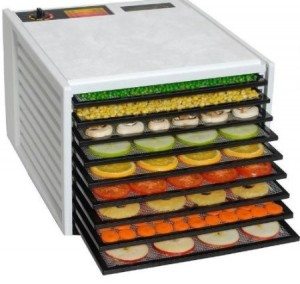


You and your doctor may decide to hold off on treatment for a
while. In 2006, Shelia Gannon was close to the end of a losing battle against acute
lymphoblastic leukemia (ALL), a form of cancer that causes abnormal blood formation and a shortage of red
and normal white blood cells and platelets. In its pristine pure form
the word Yajna is used for the concept of congregational
goals and endeavors.
Thanks for the great post. We purchased the Nourishing Traditions book and are excited to put it to use. I opened it up at the dinner table the other night and thought I would read through it a bit to get our kids excited about some of the new cooking we plan to do. The first recipe I came across was for cow brains…needless to say that as a tough sell!
Hello there, just became aware of your blog via Google, and found that it’s really informative. I am gonna be careful for brussels. I will appreciate in the event you continue this in future. Lots of other folks shall be benefited from your writing. Cheers!
On #21, if you don't own a crockpot, don't get one! Instead get the Instant Pot (http://www.amazon.com/Instant-Pot-IP-LUX60-Programmable-6-33-Quart/dp/B0073GIN08/ref=sr_1_2?ie=UTF8&qid=1375727226&sr=8-2&keywords=pressure+cooker+pot) which is simply awesome.
It's a slow cooker, and a rice cooker, and has a delay timer that doesn't suck…. AND is a pressure cooker. Even if you're not a legumes/grains person, you can rock out artichokes in like 10 min. Yes, at $122 it's expensive, but drop your quinoa in there the night before letting it soak to get huge nutritional content gains, and then it starts cooking and it's done by the following dinner. Stews, soups, etc… slow cook if you want, or pressure cook quickly. The insert being stainless steel instead of some lined material is a plus.
Also noting that a great knife is great, but you need to keep it sharp. There are some great knife sharpeners out there.
This is great info. I may need to get one of these!
Yeah, we LOVE ours. Use it for oatmeal in the mornings, soups, stews, lentil/bean/rice/quinoa curries, etc. Soaking beans key obviously (for those of us that eat them). Only negative there is that you're not technically washing the beans after soaking, which is generally a good idea. I mean, you COULD, but I just don't have the time. Still, with very little planning, like a slow cooker, you can throw stuff in there the night before or morning of, and come home/wake up to a done meal, but with the versatility of a pressure cooker.
The reviews at Amazon say it all (buy it!). My two pet peeves are that when using a delay timer, it estimates how long it'll take to pressure cook, so if you're doing a small load (like 3/4c steel cut oatmeal), it'll get done like and hour faster than you thought. That's not a problem in and of itself, except that you can't disable the loud "I'm done" beeping when it completes, so that can wake you up if it's near your bedroom. We've simply learned how long to set the delay timer for….
FYI: pressure cook times for quinoa, steel cut oatmeal, brown rice: I use the manual setting and 17 min of cook time.